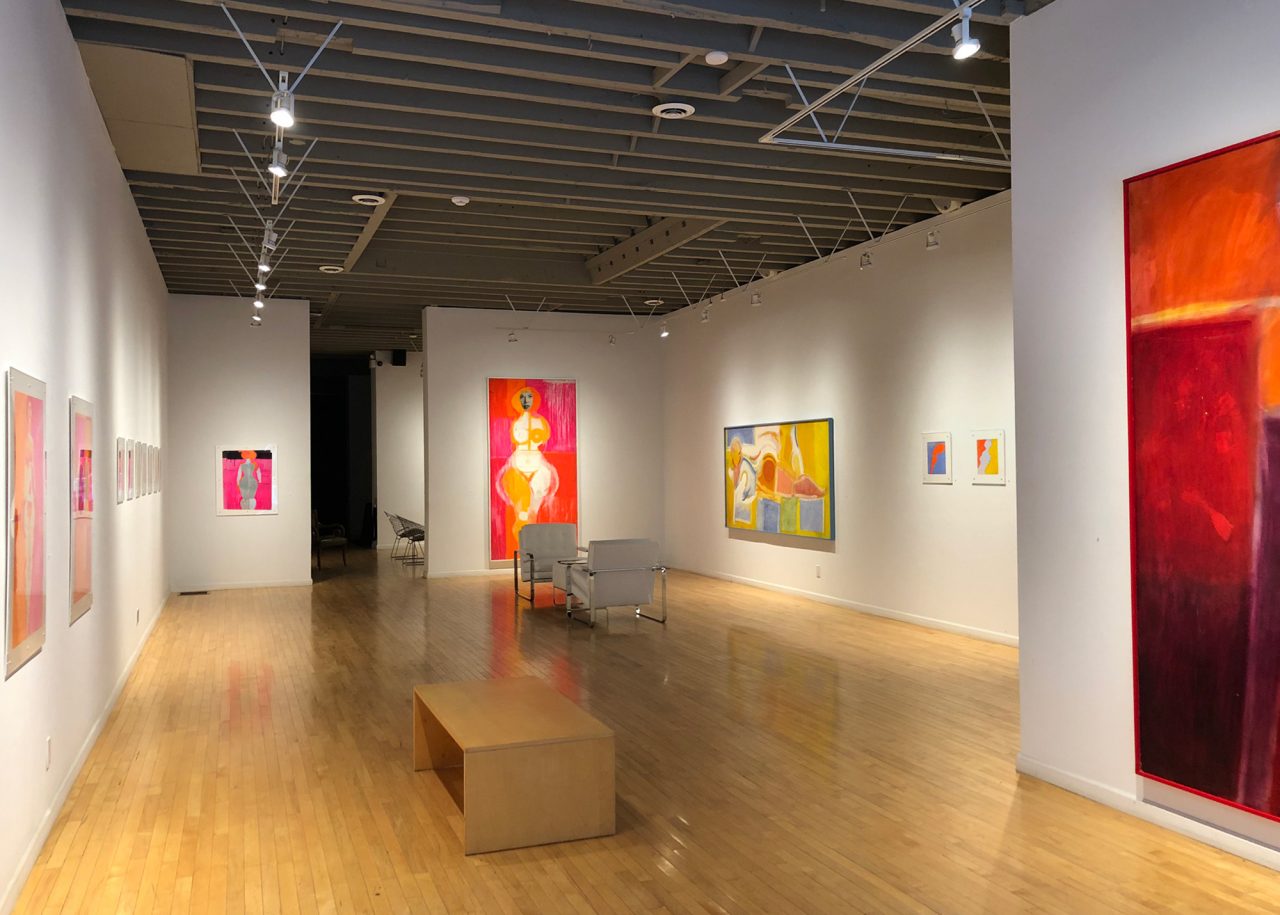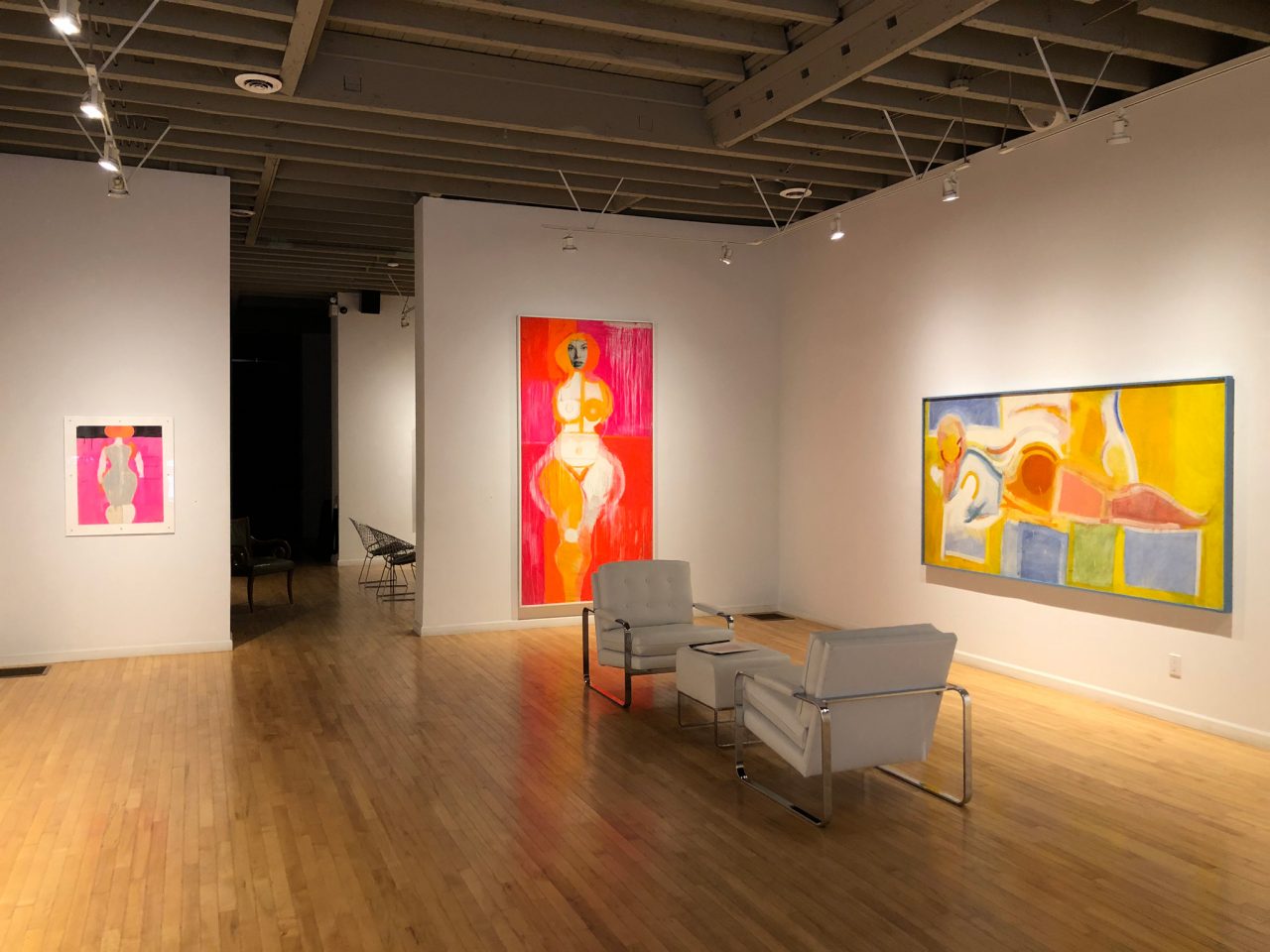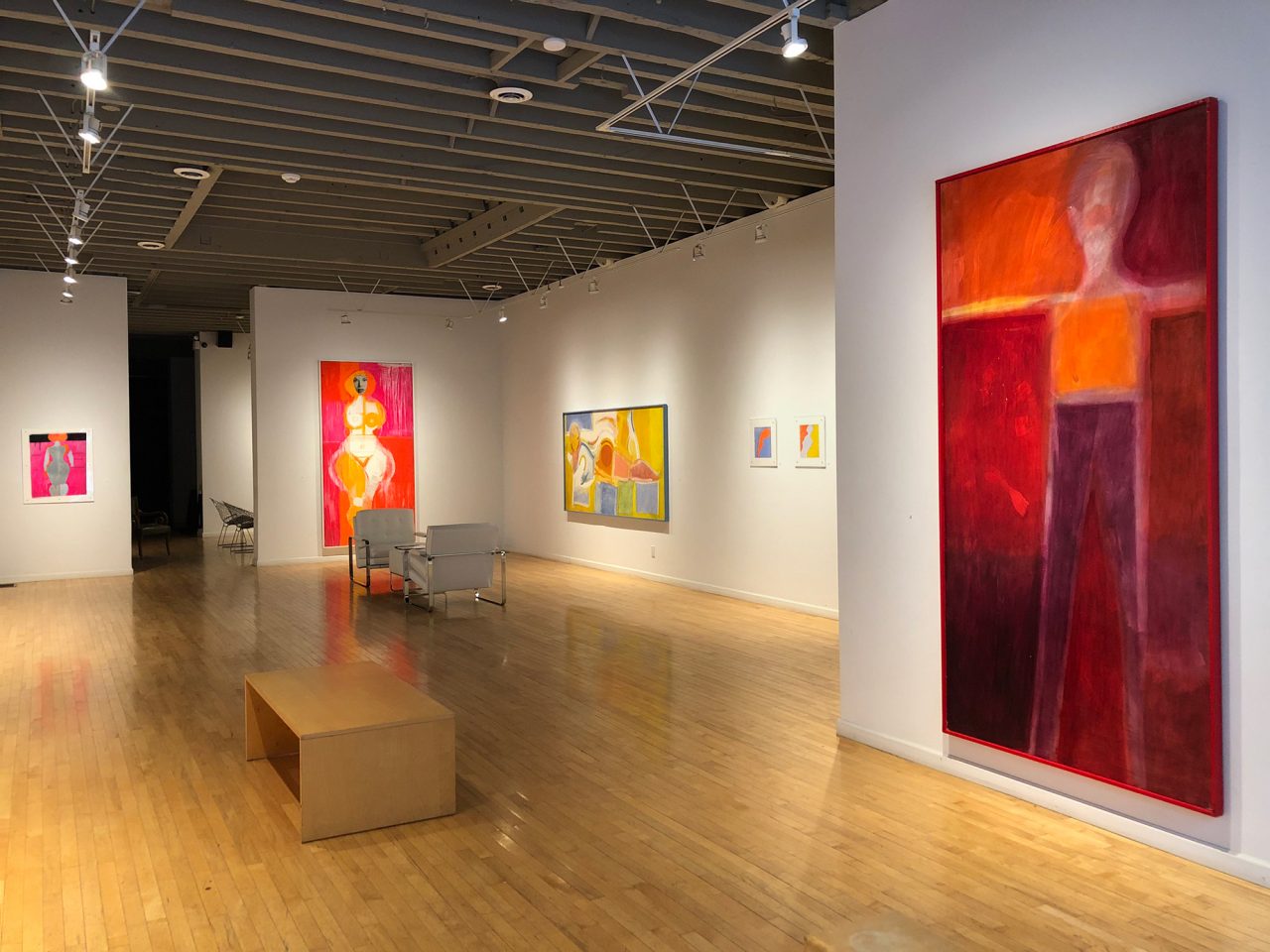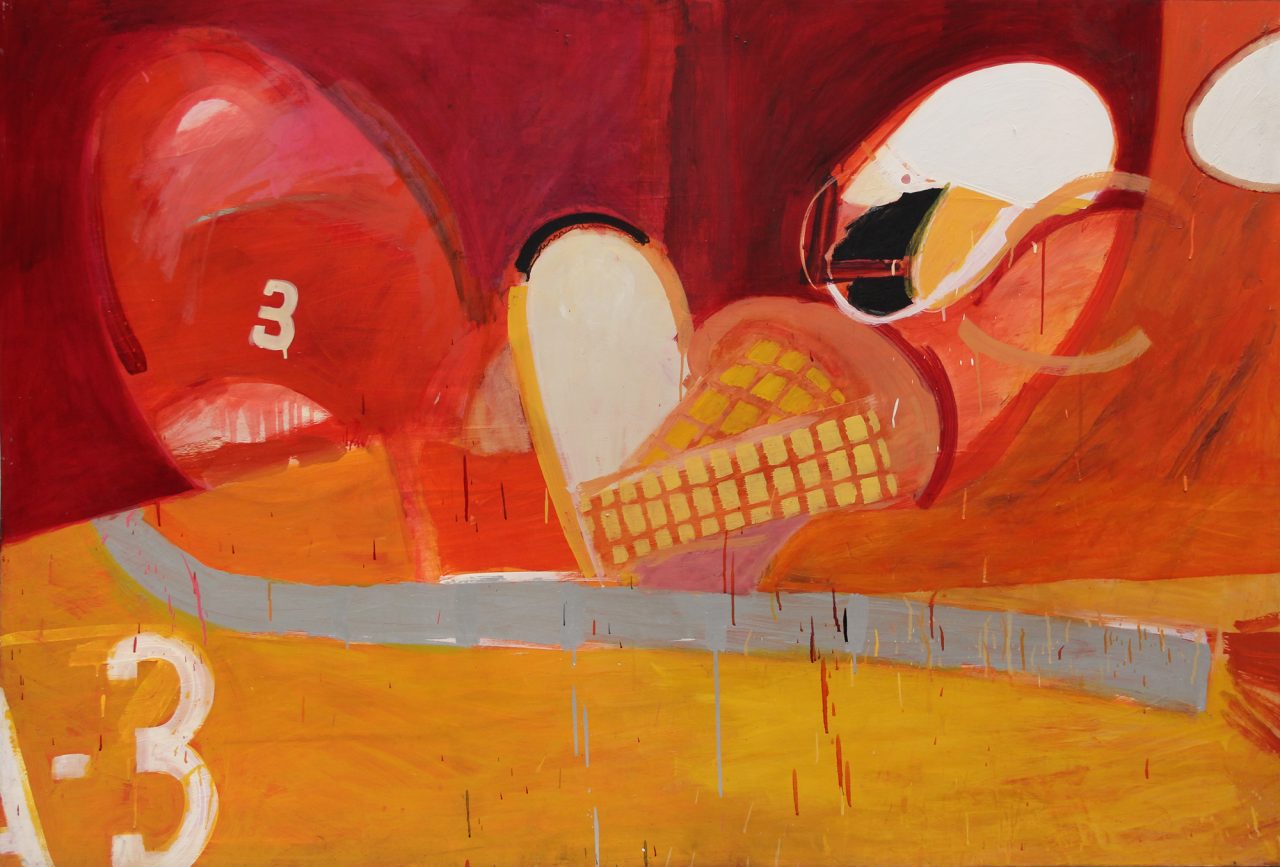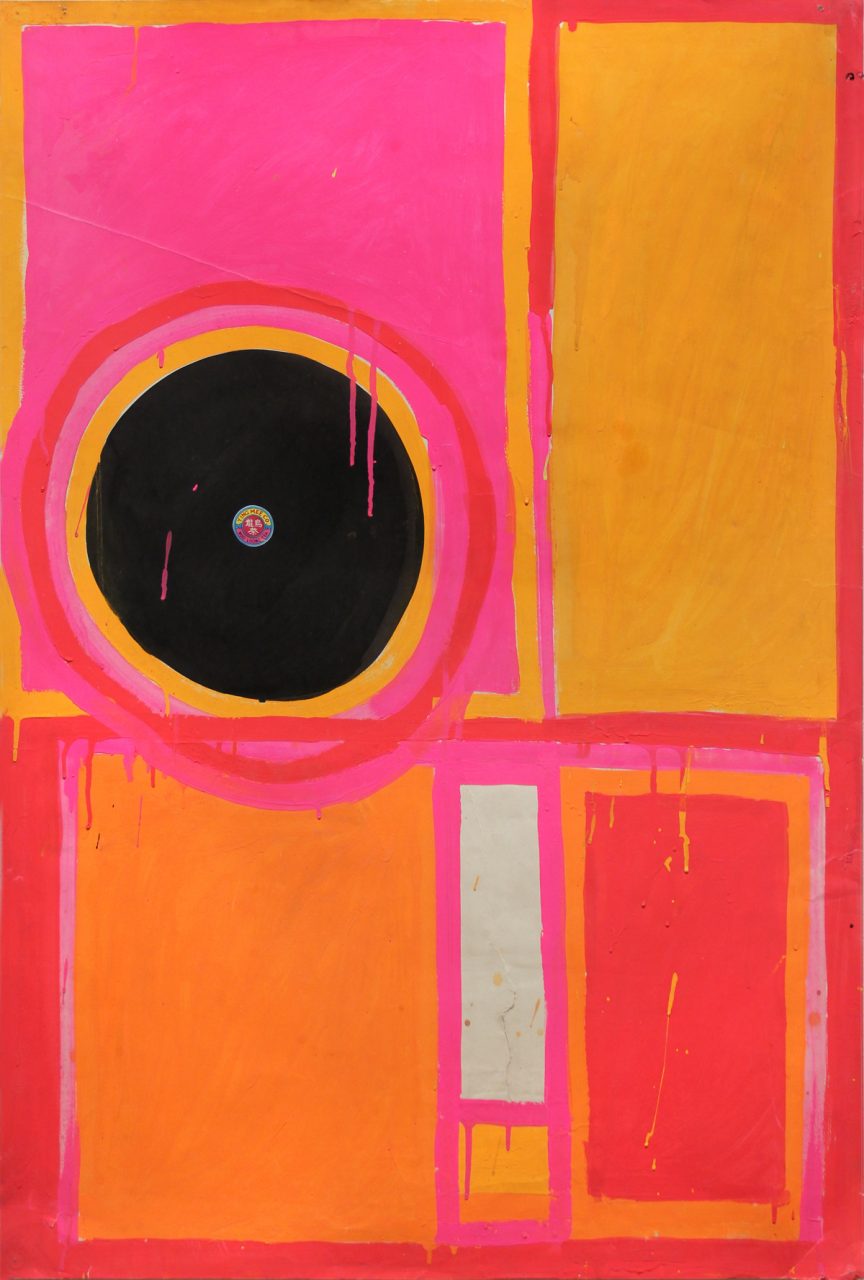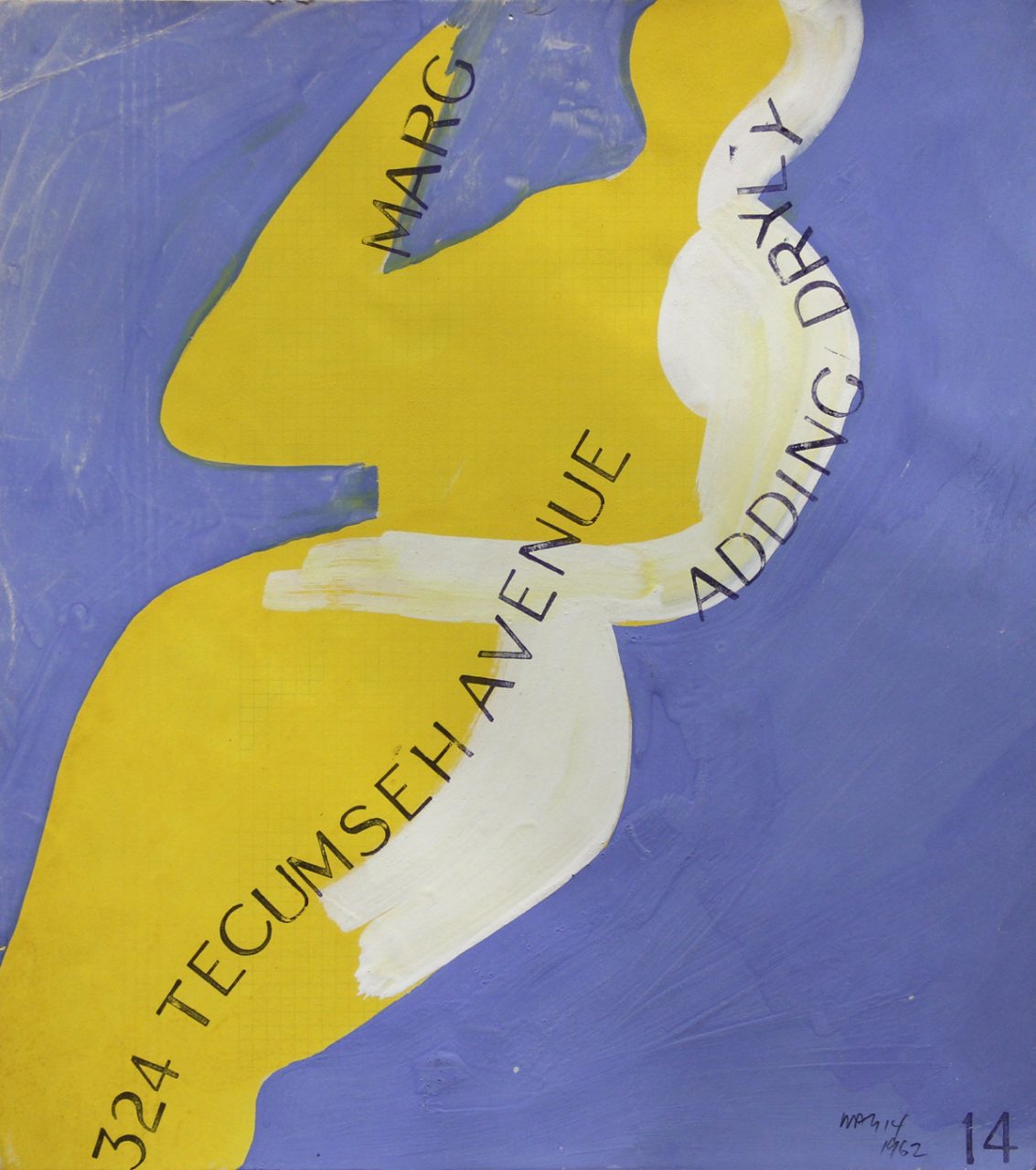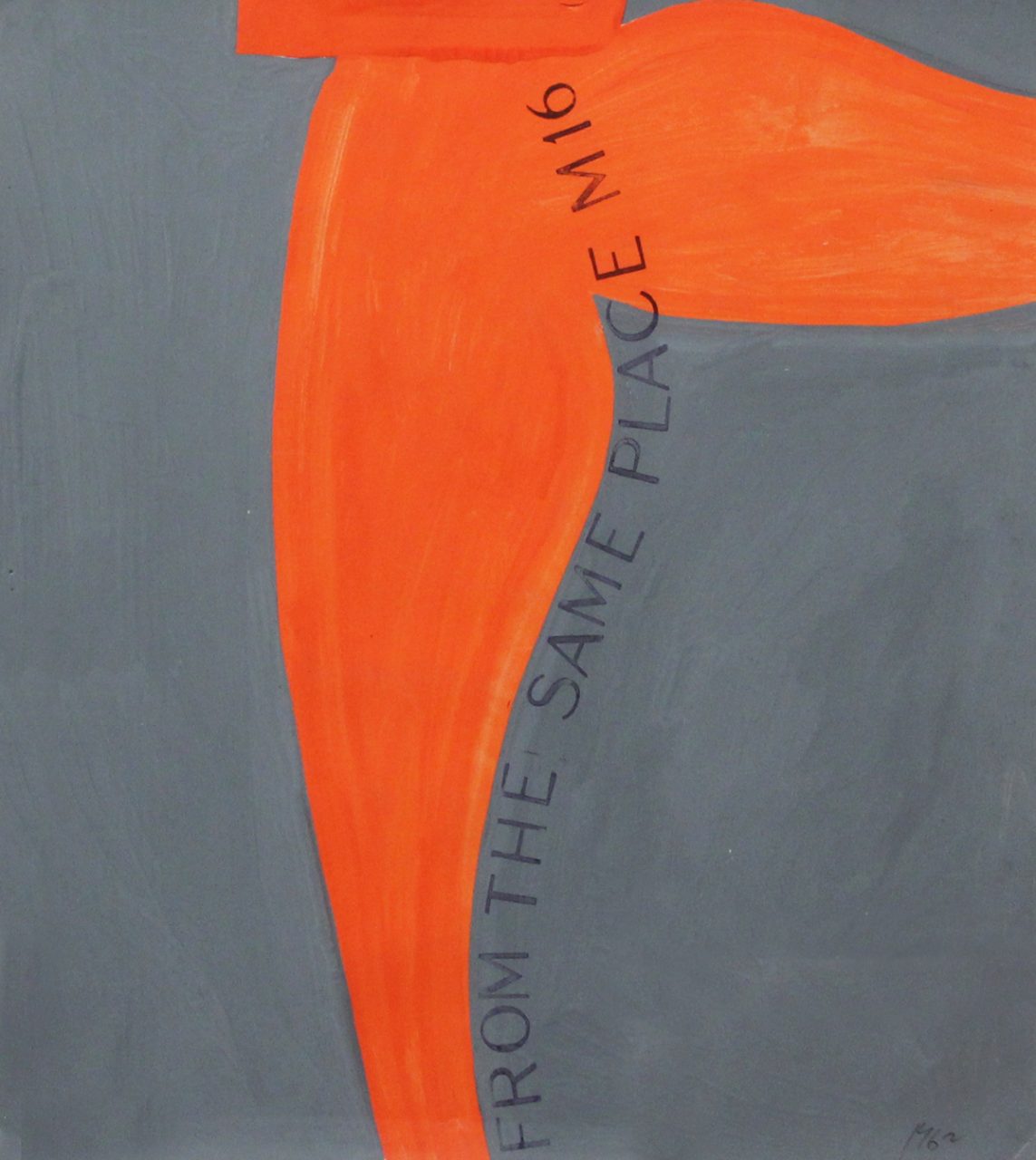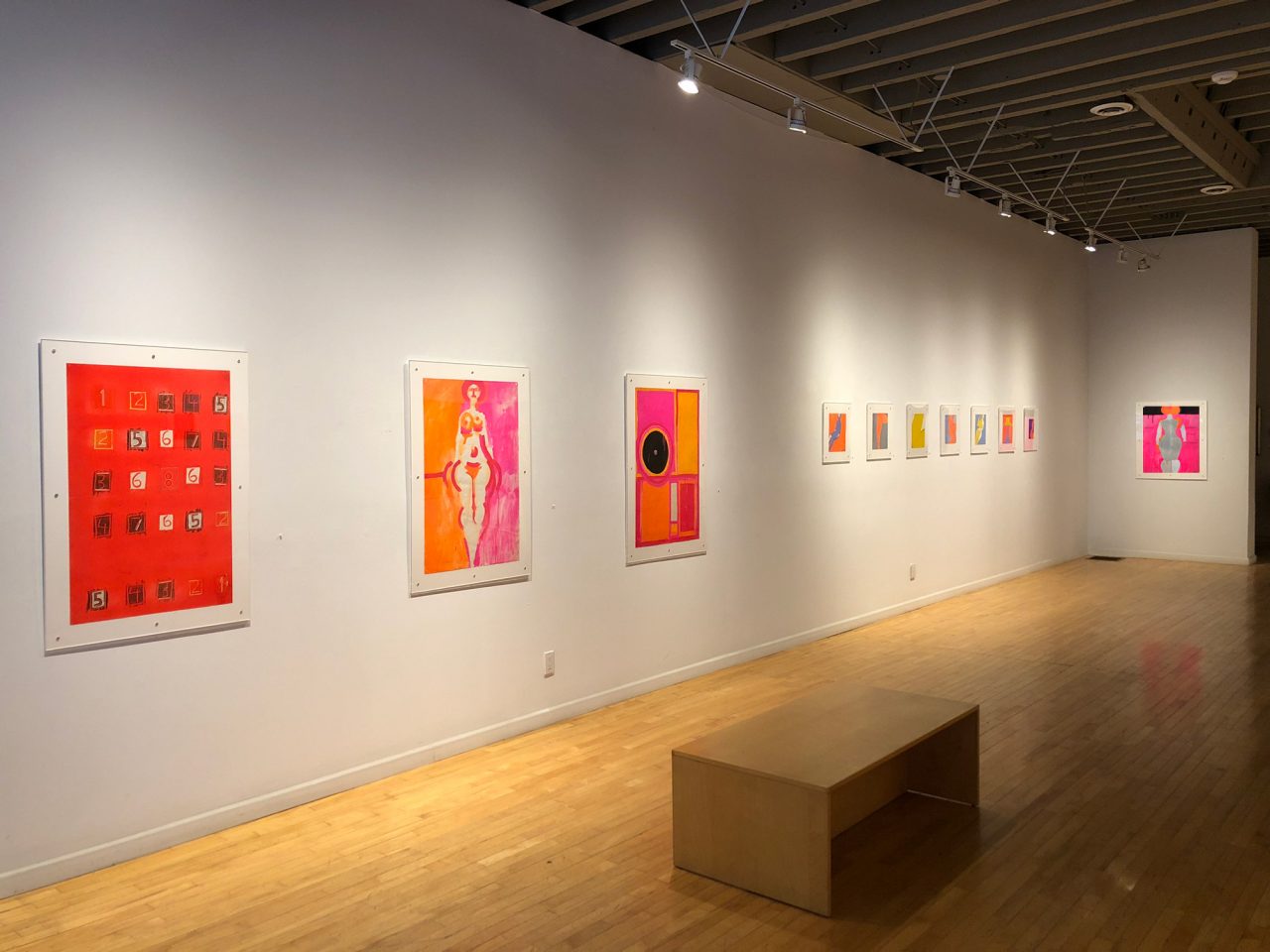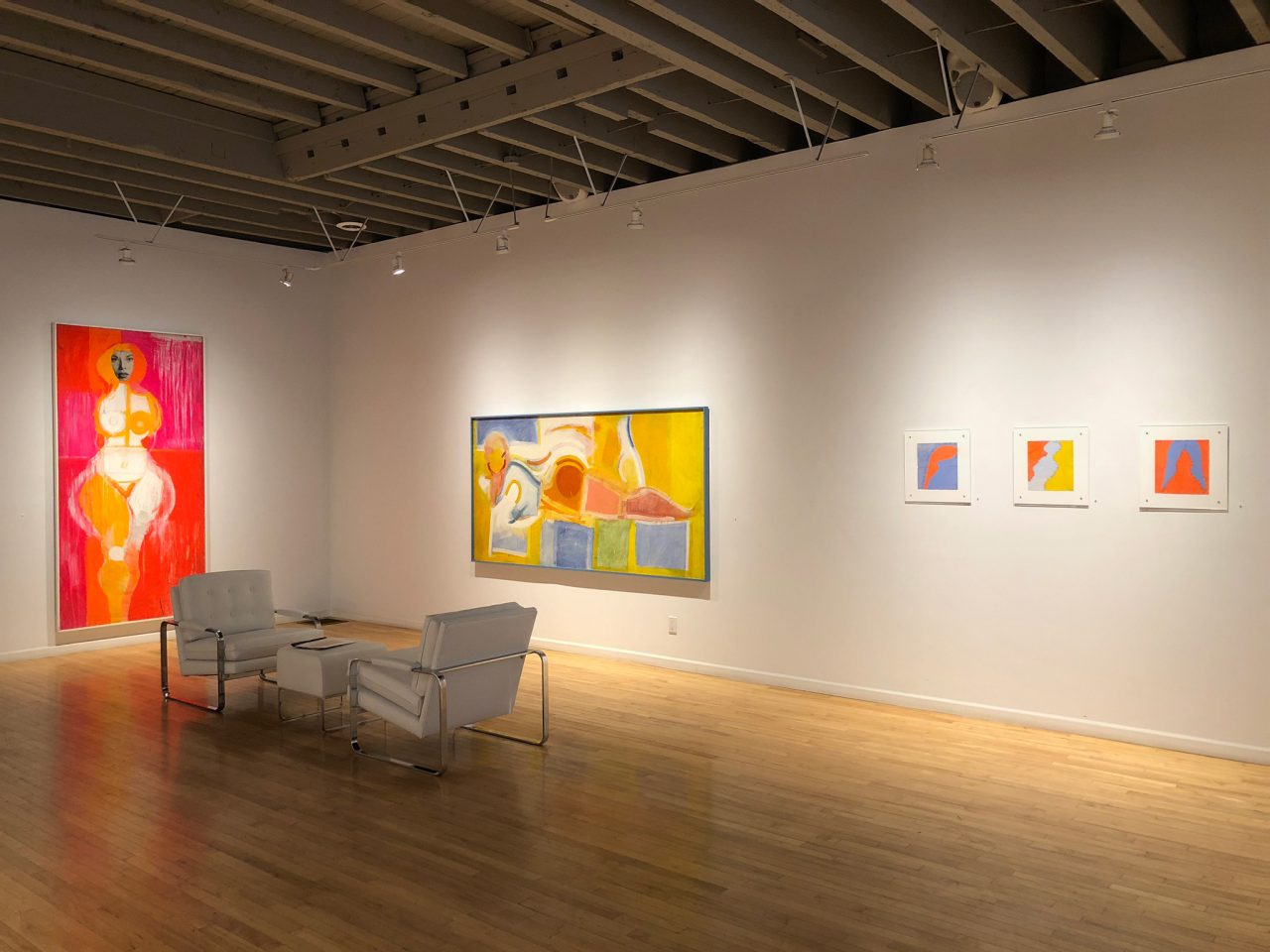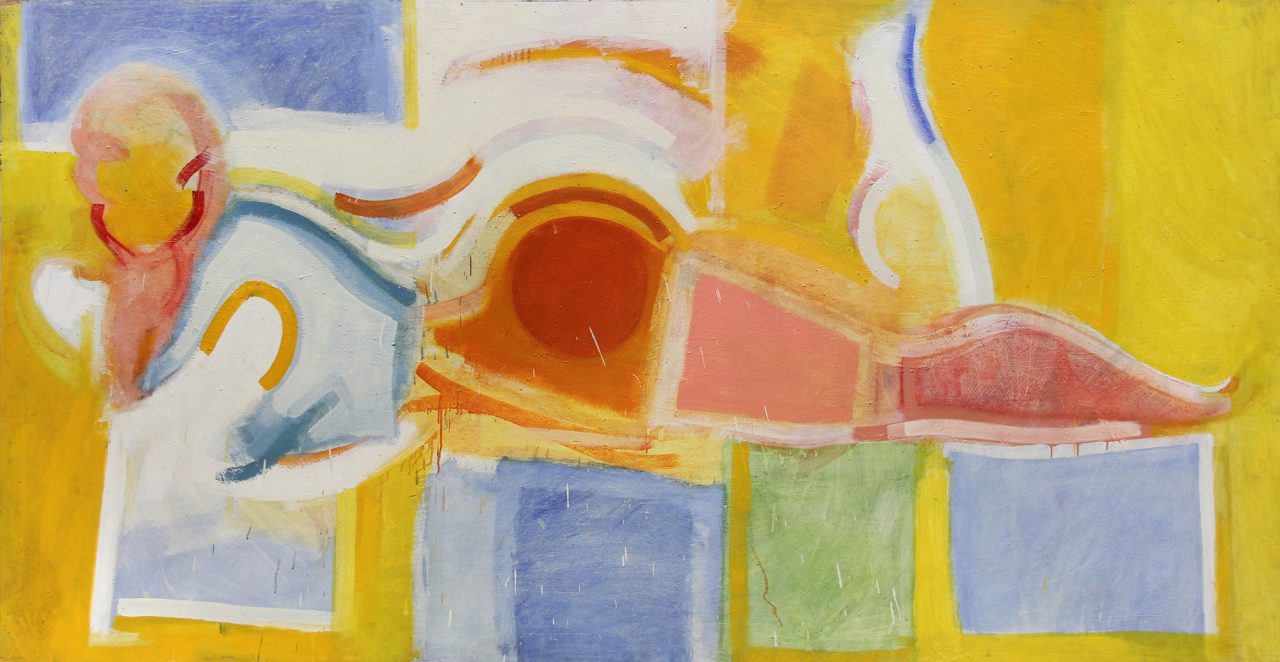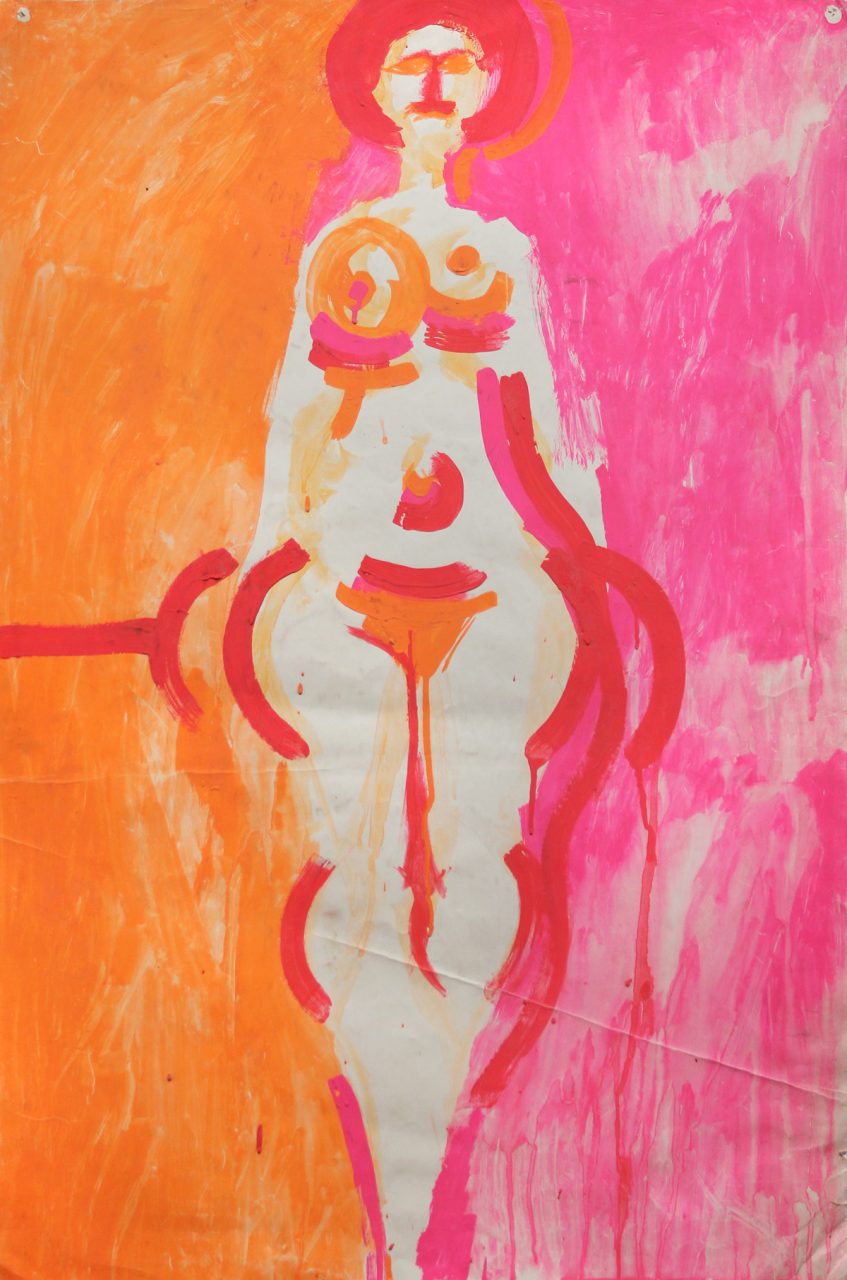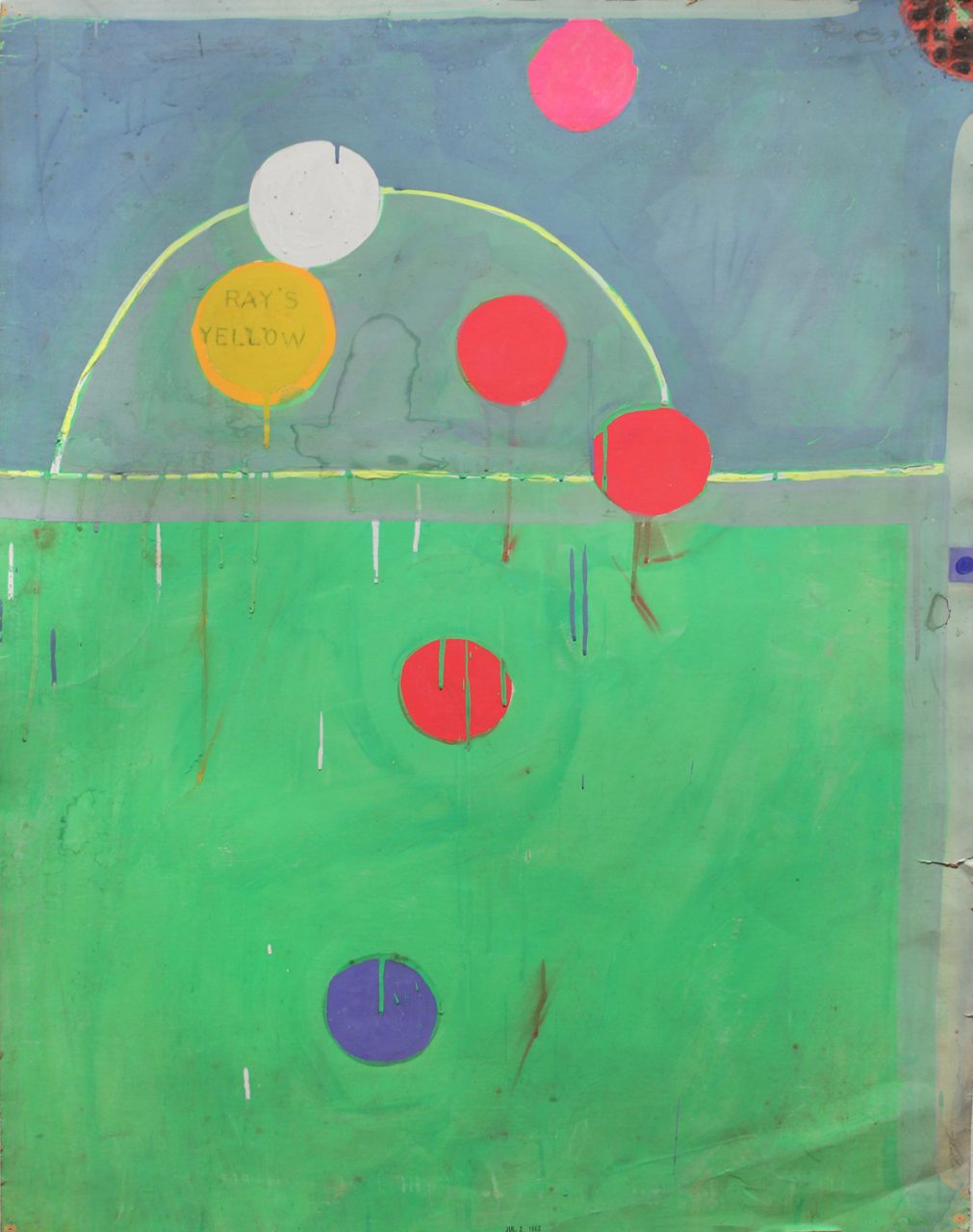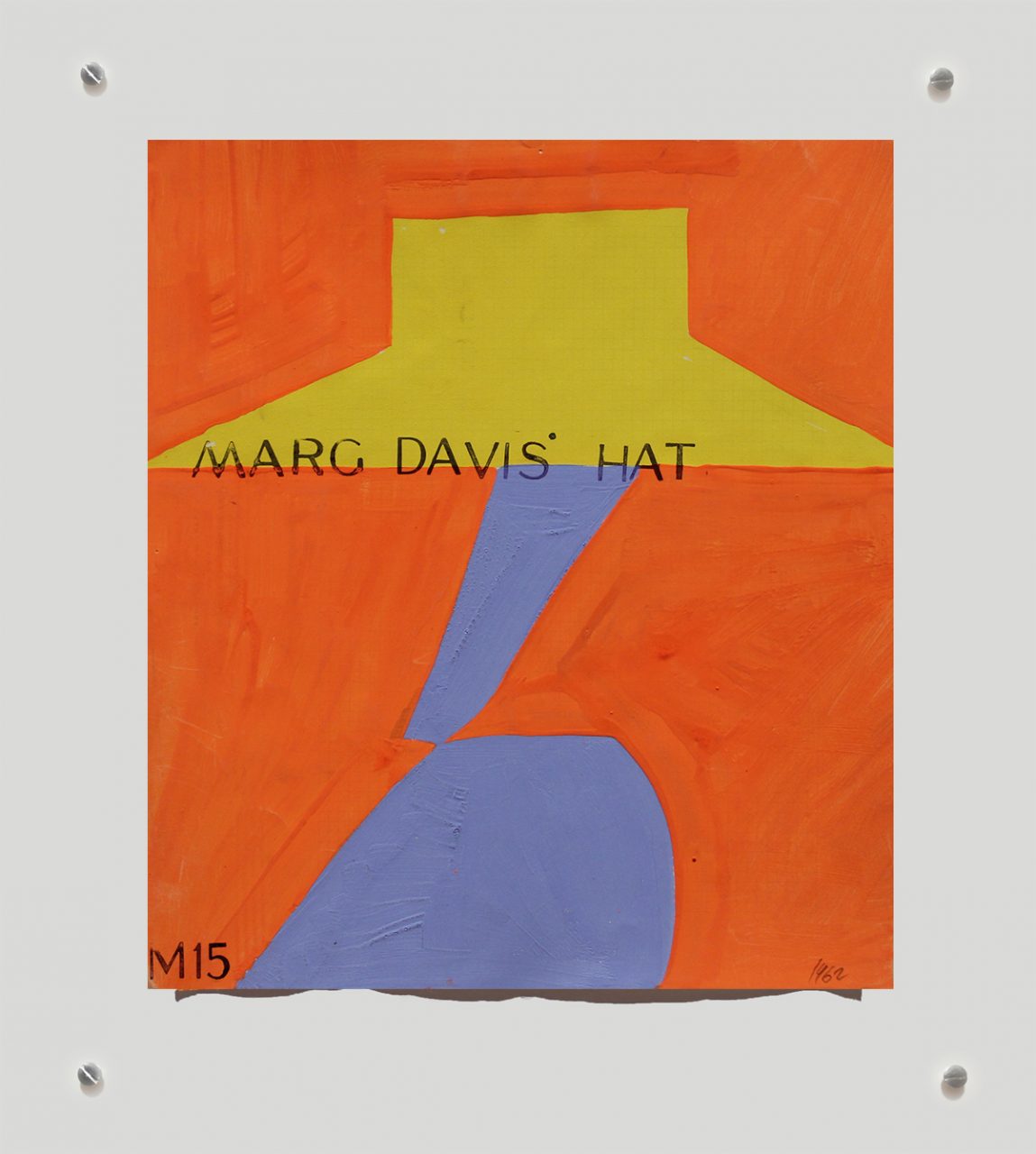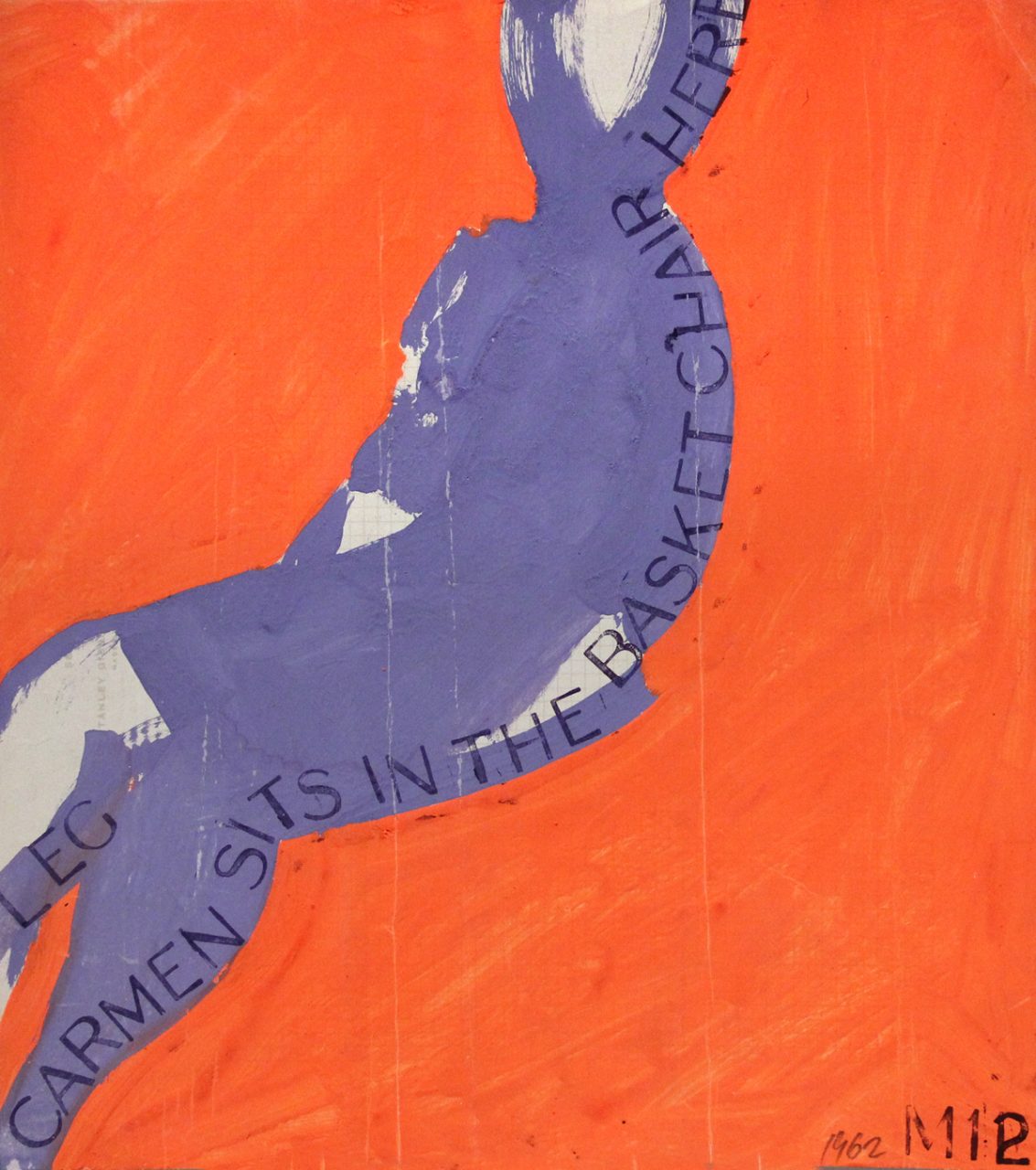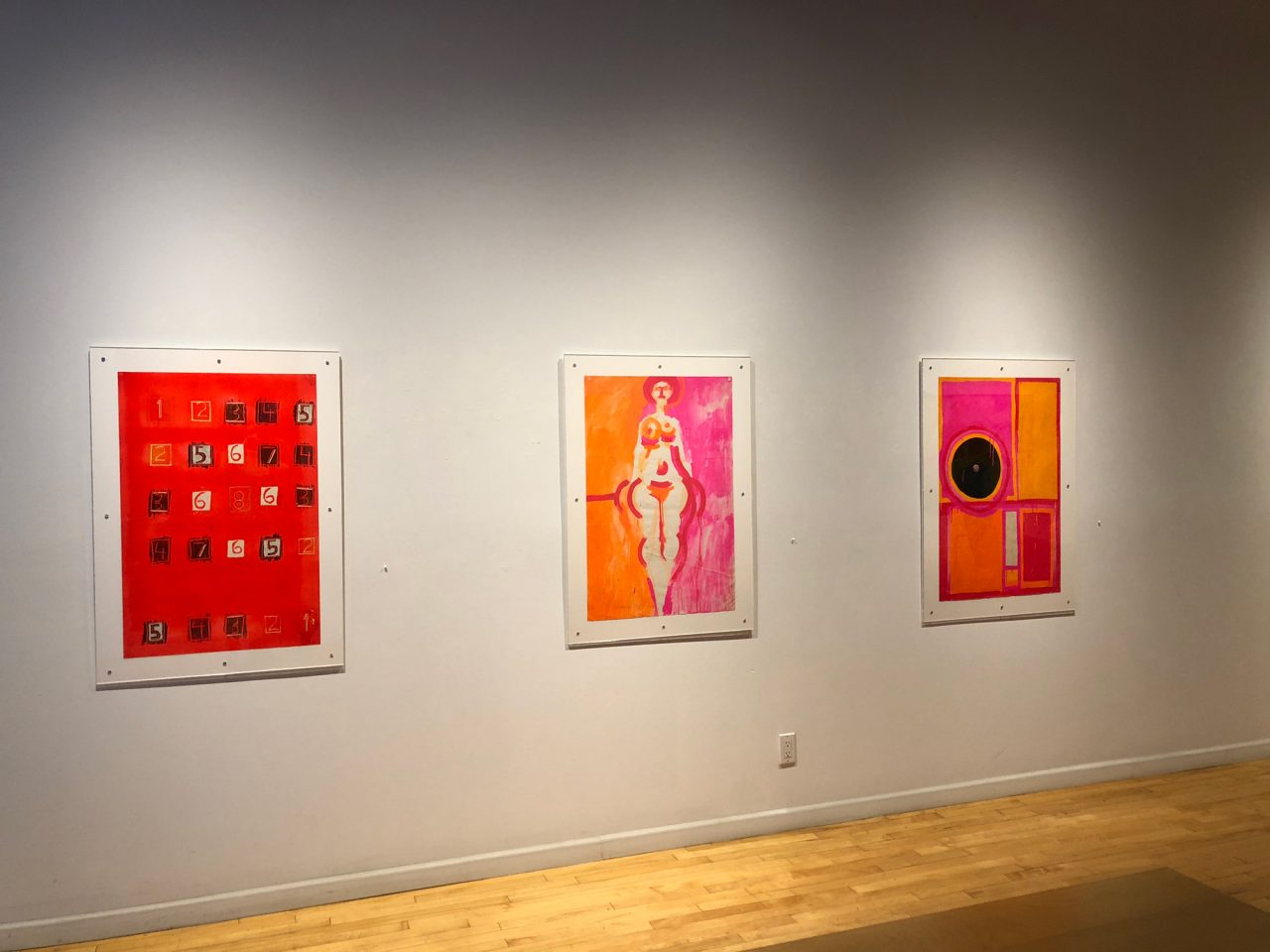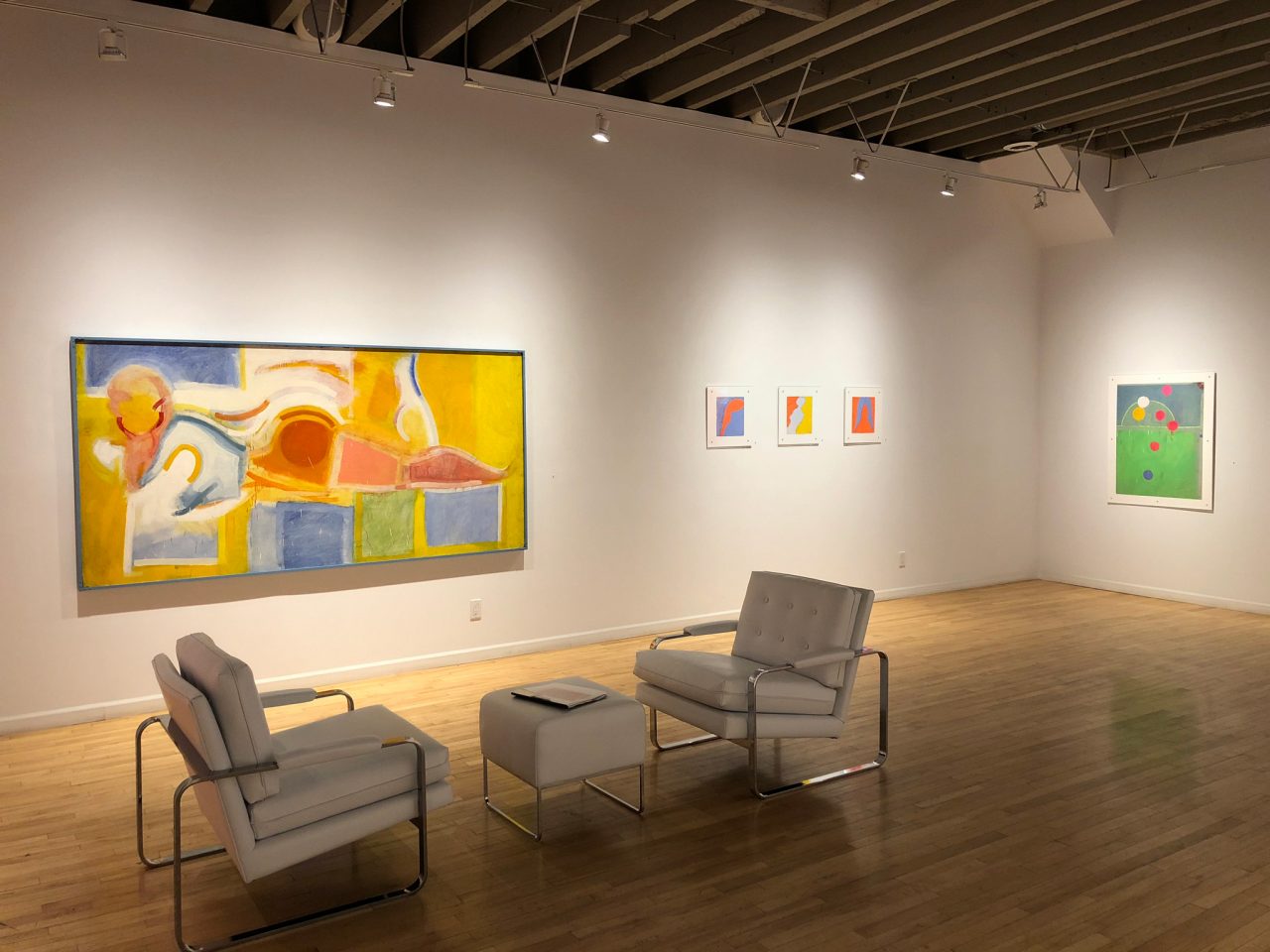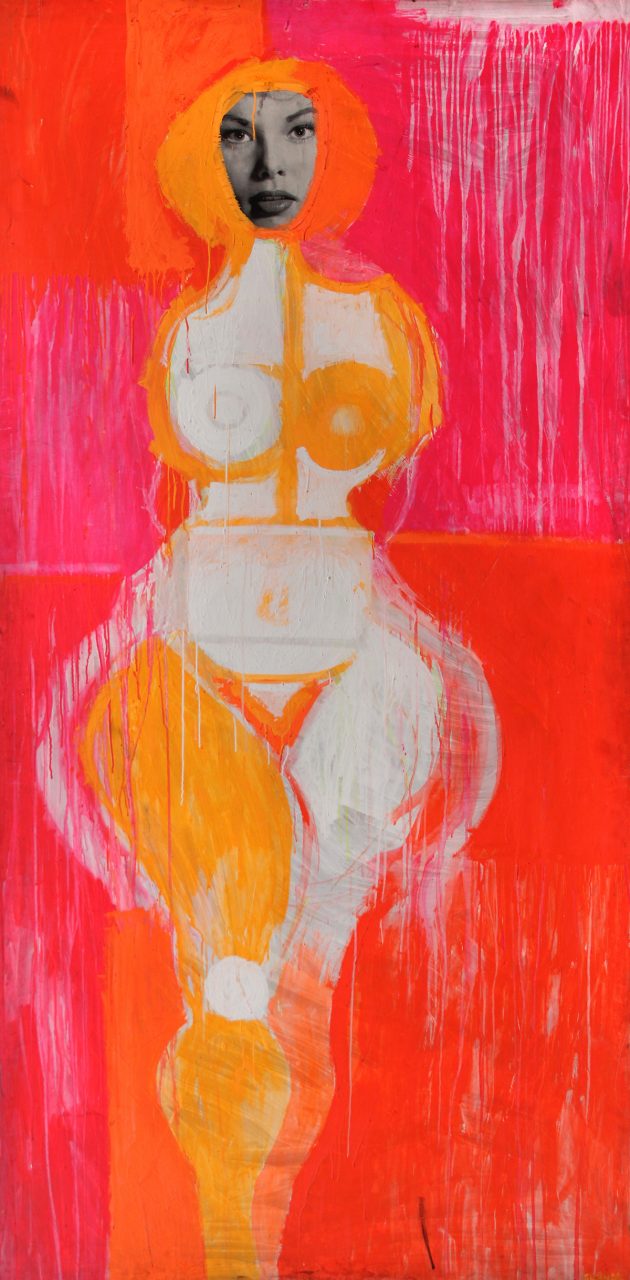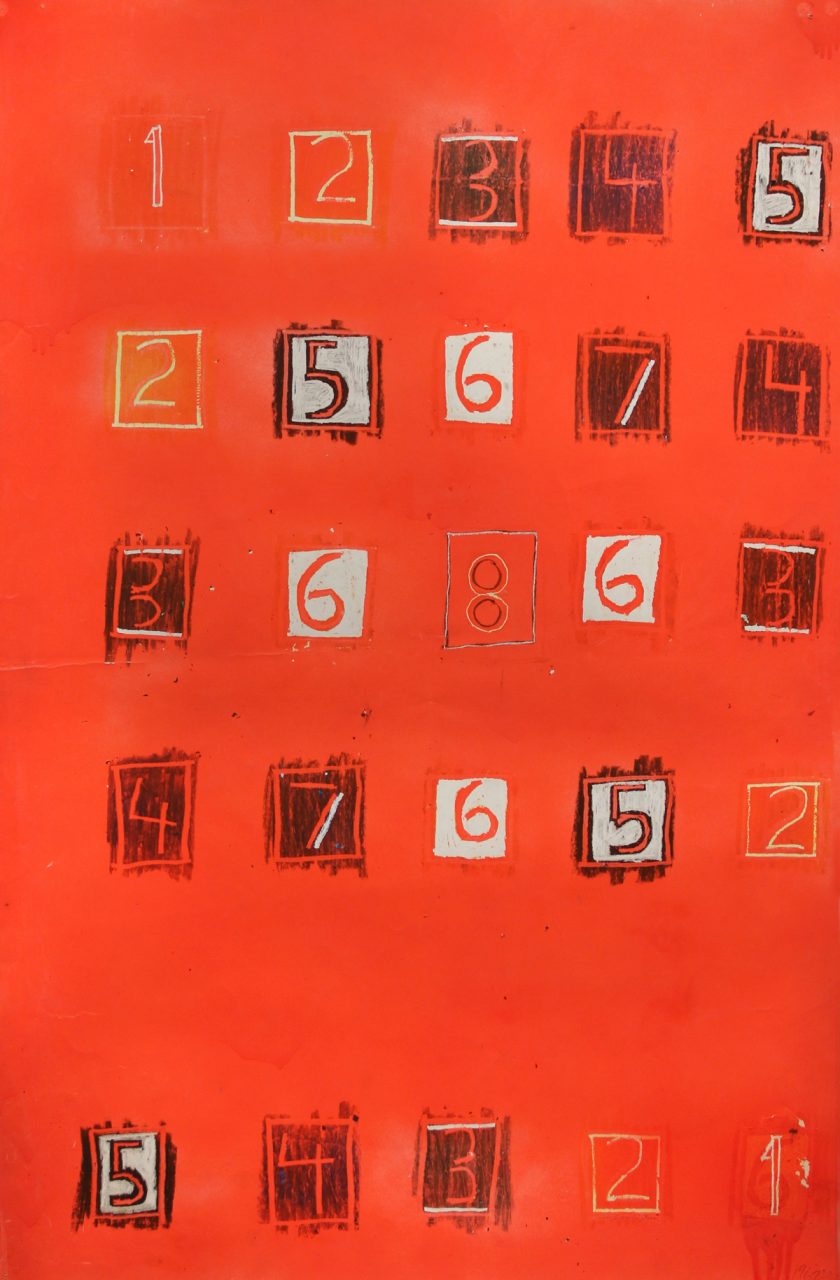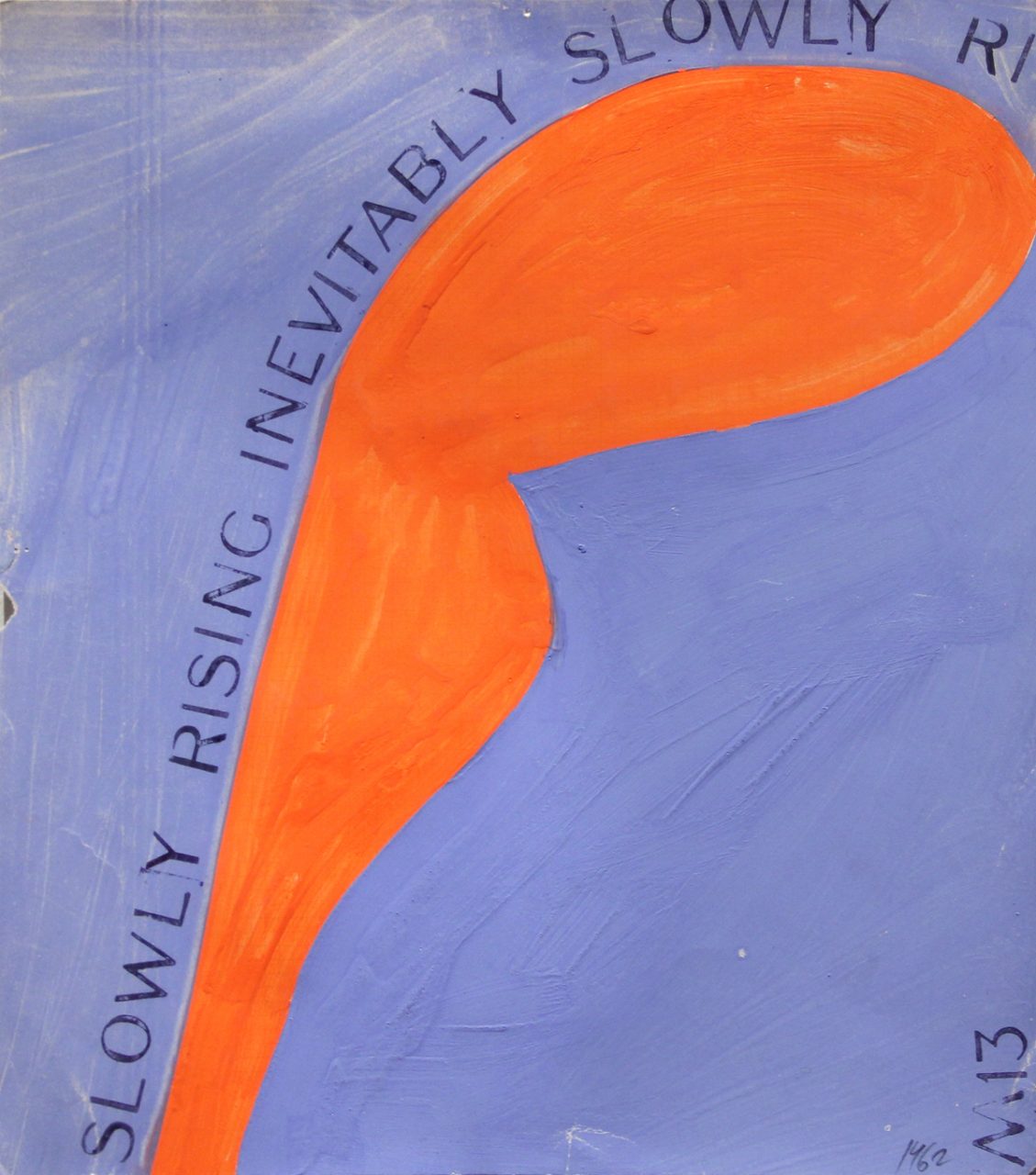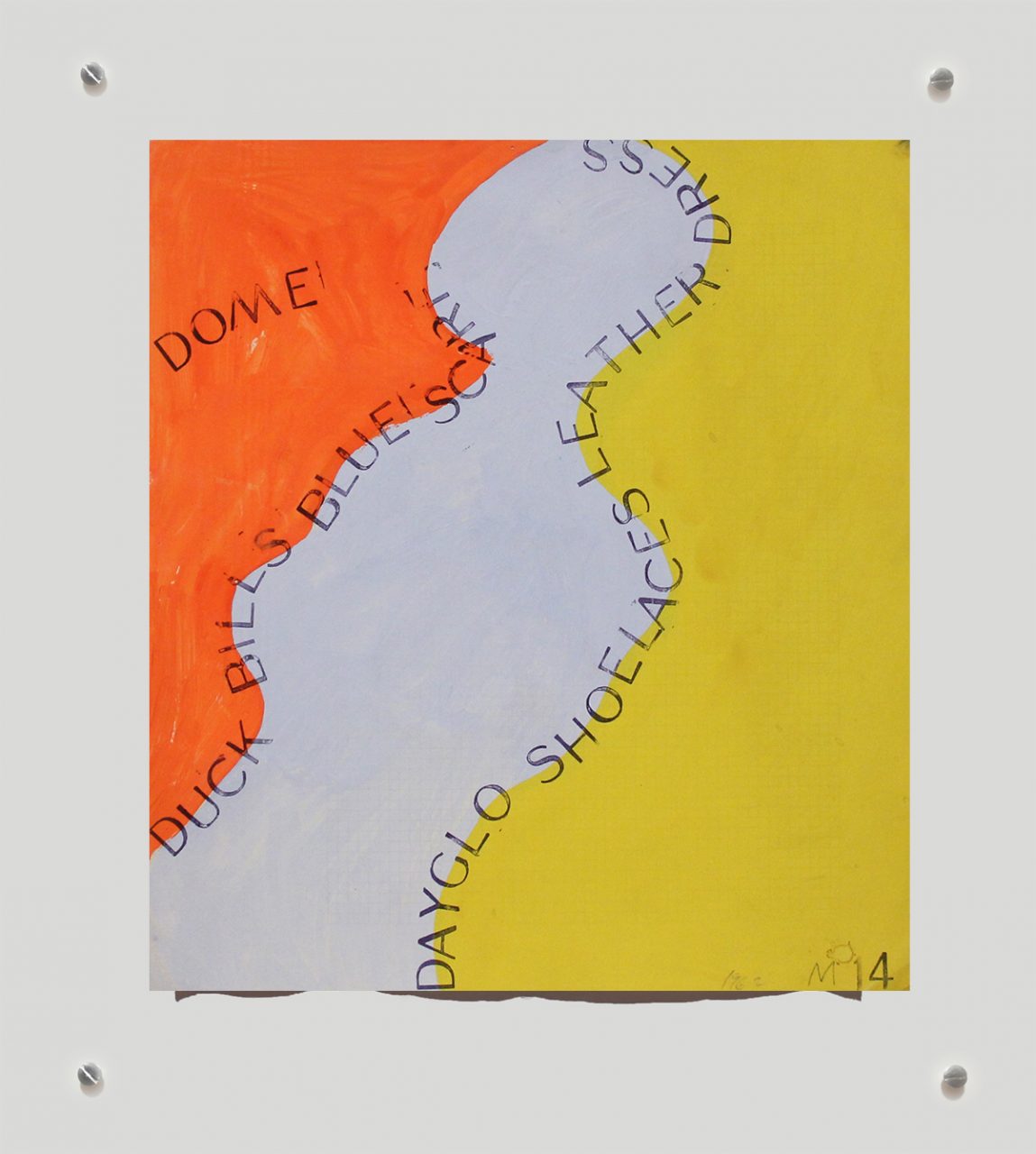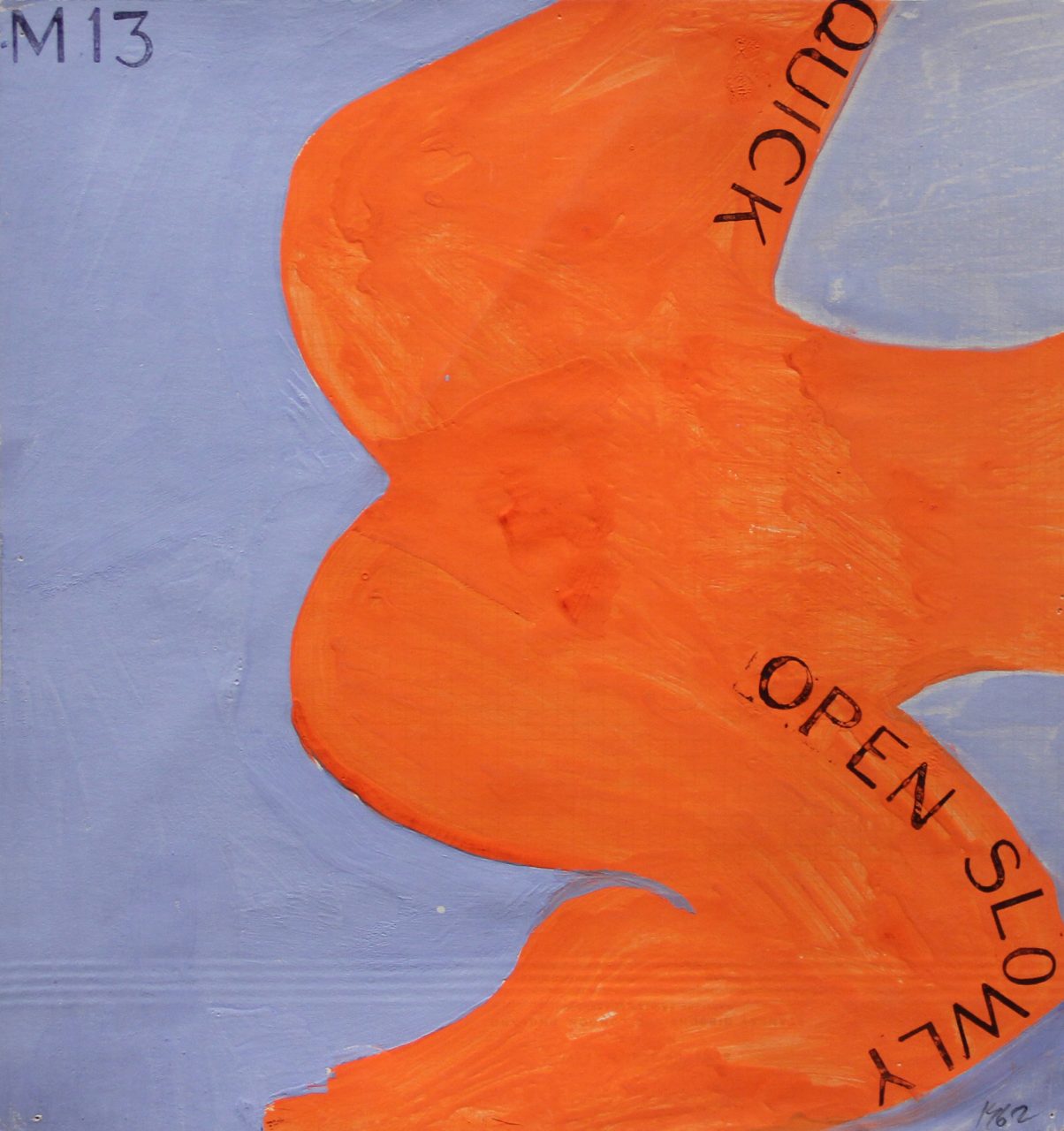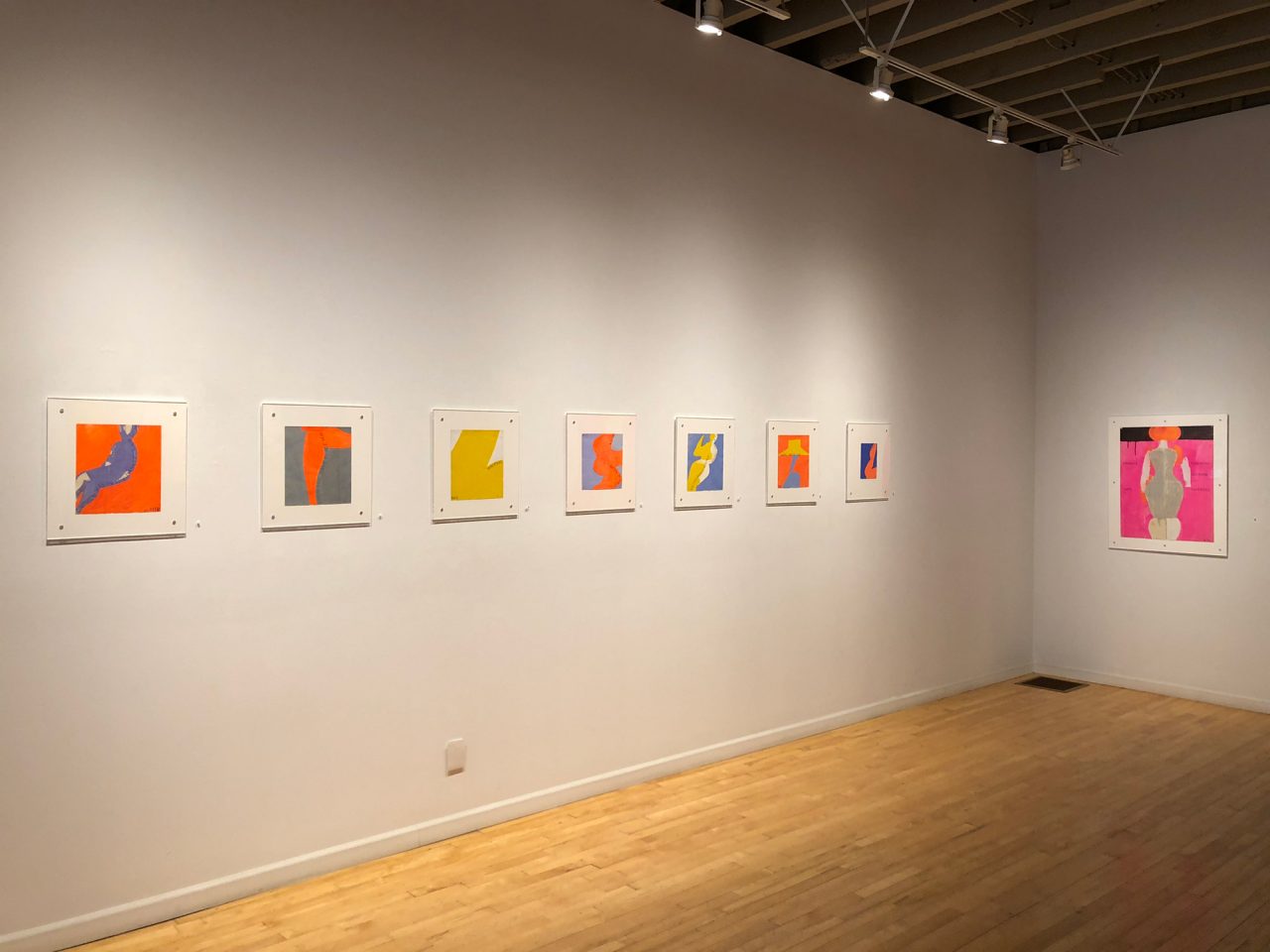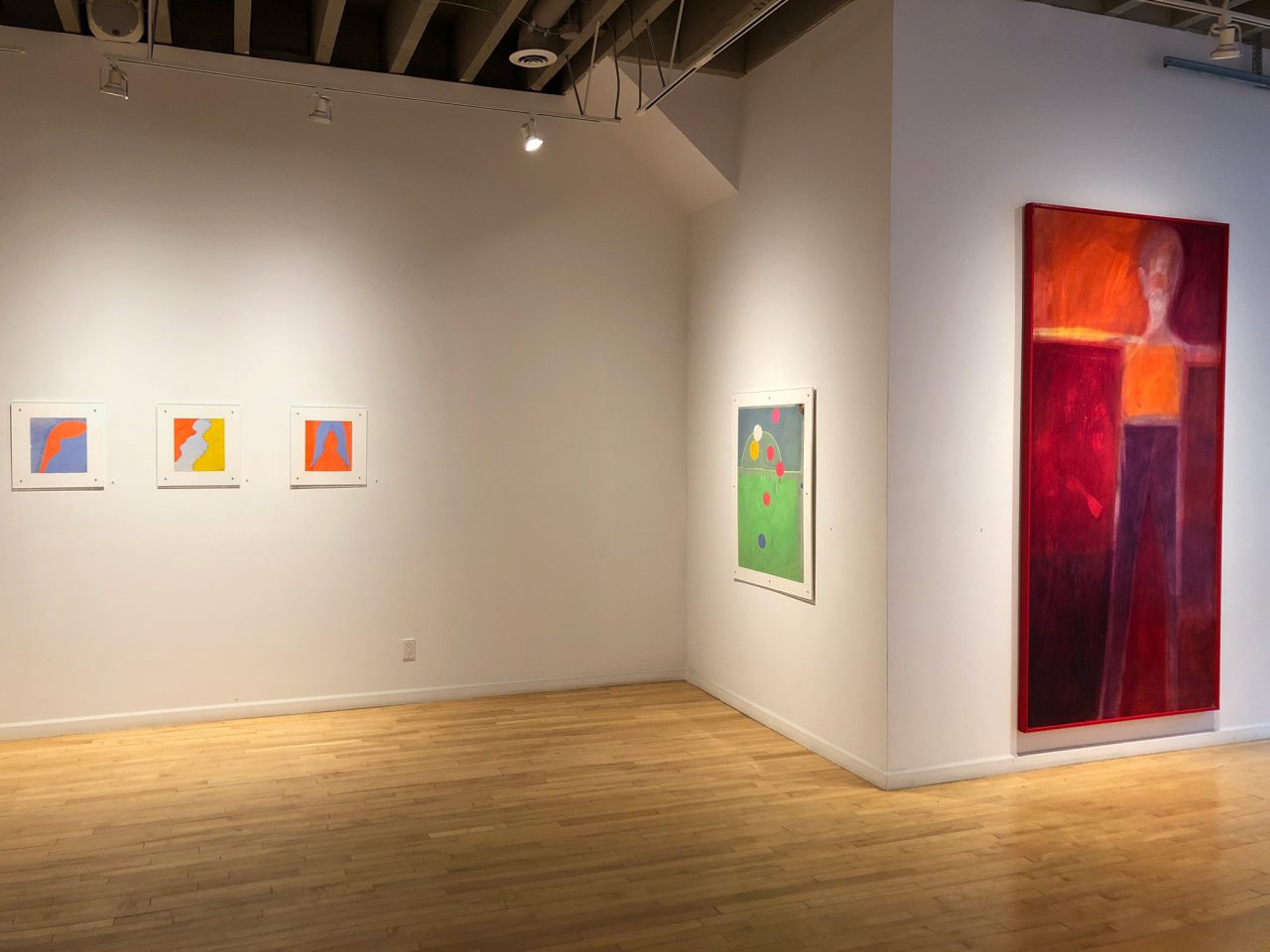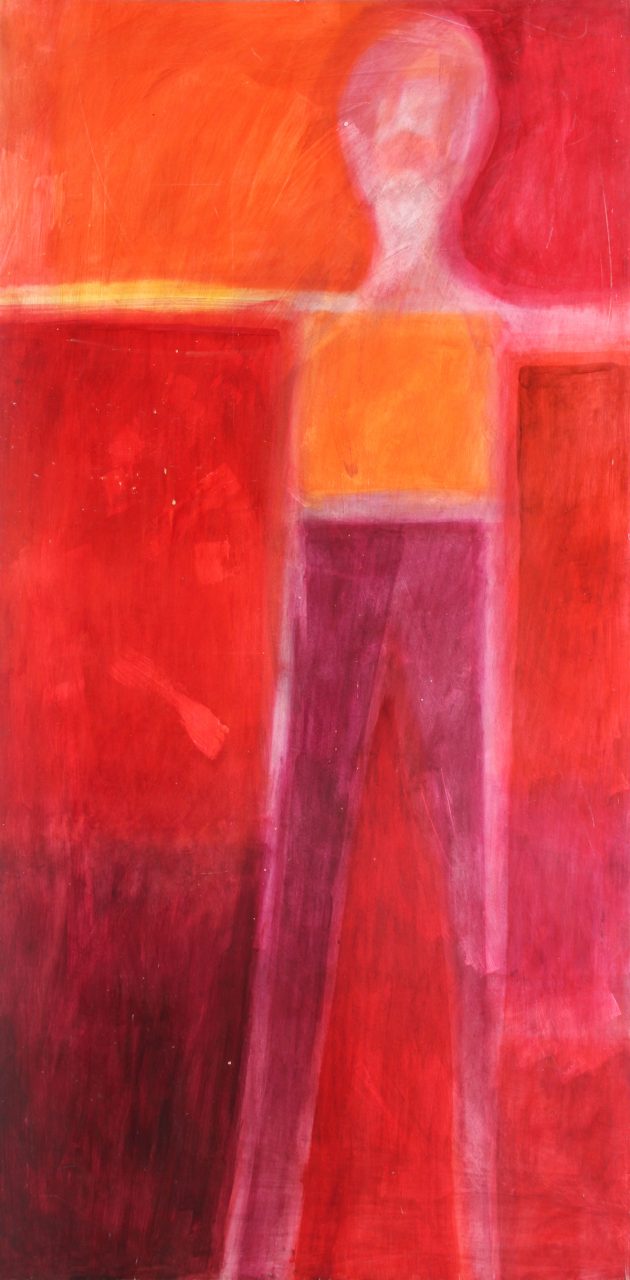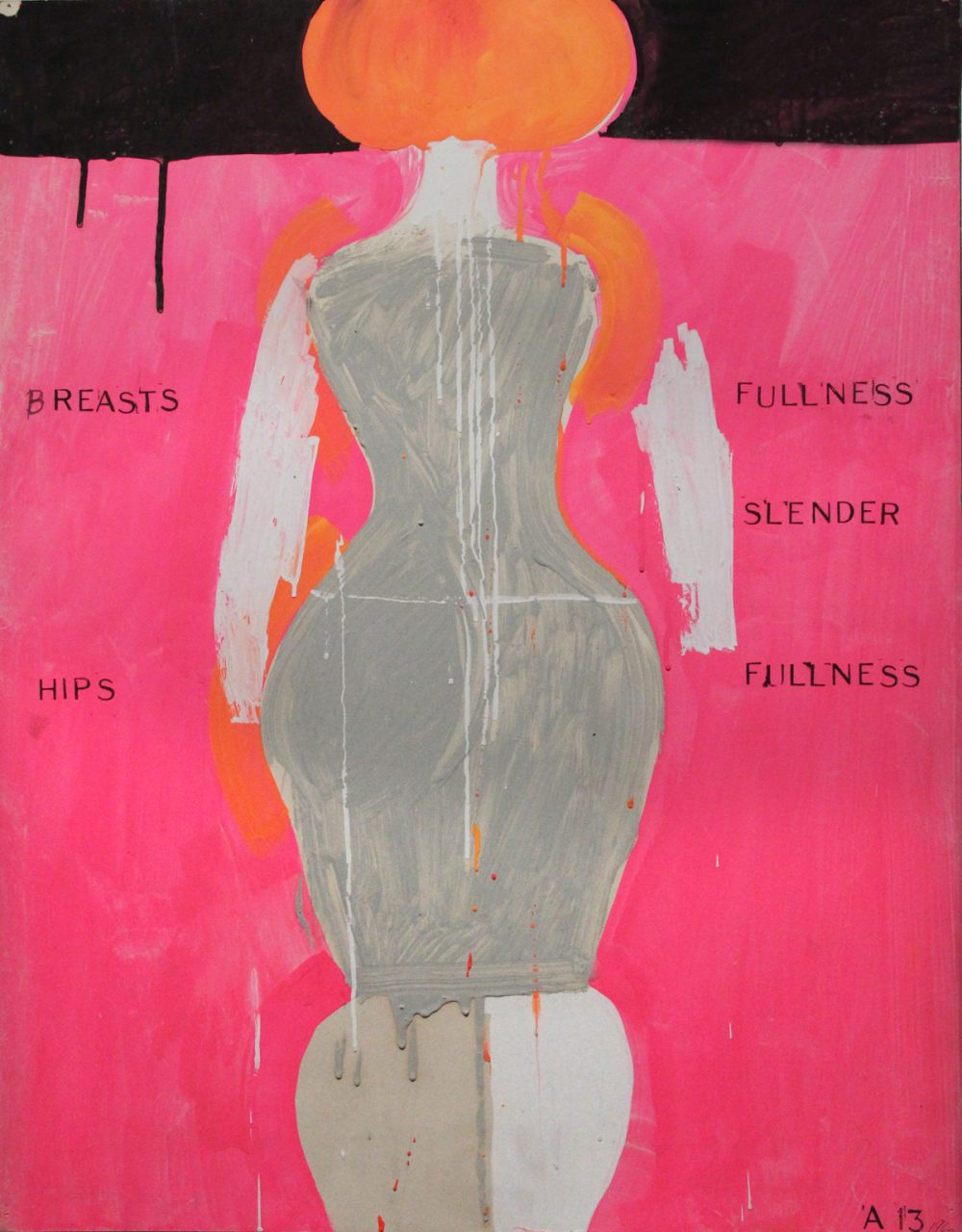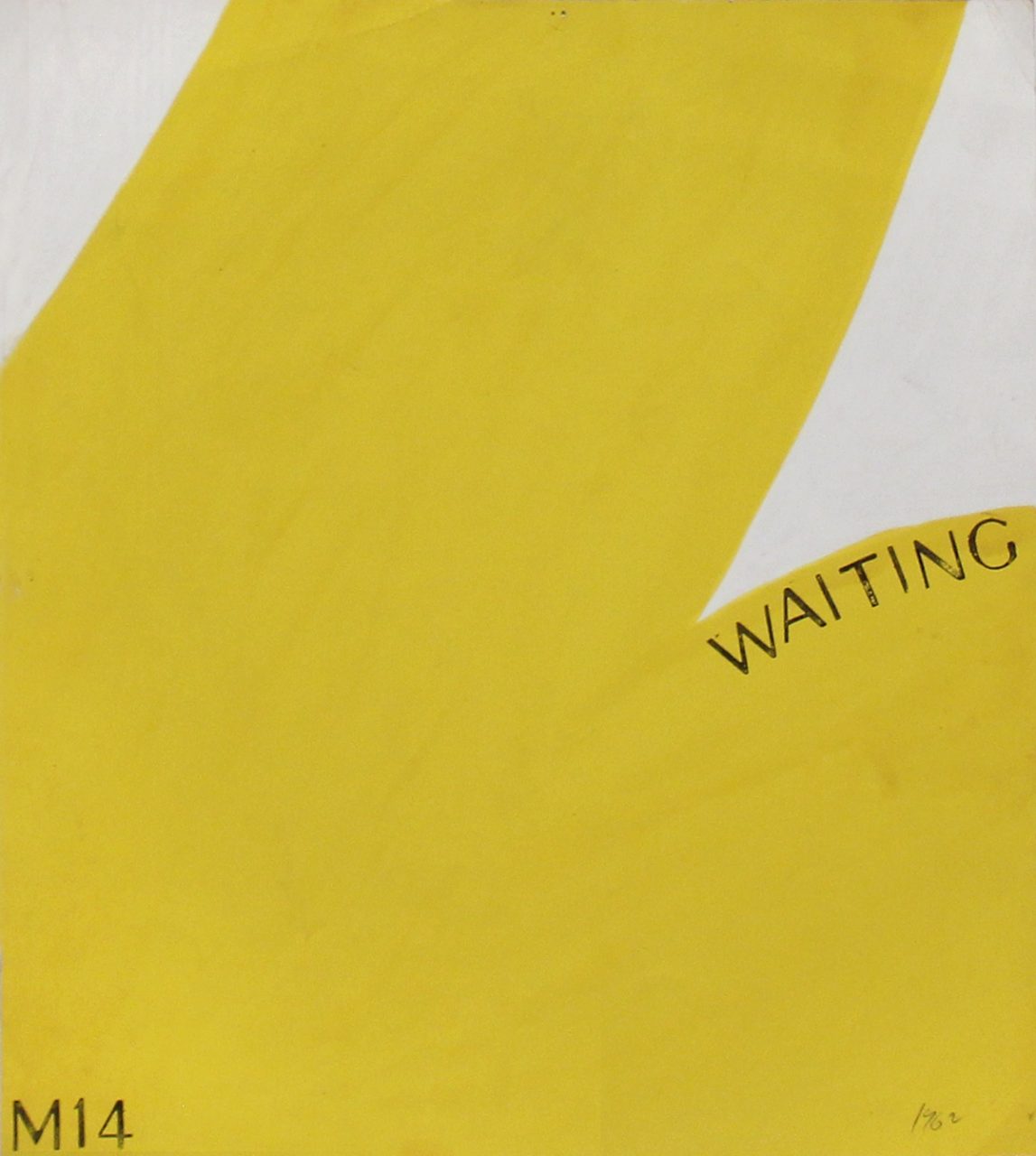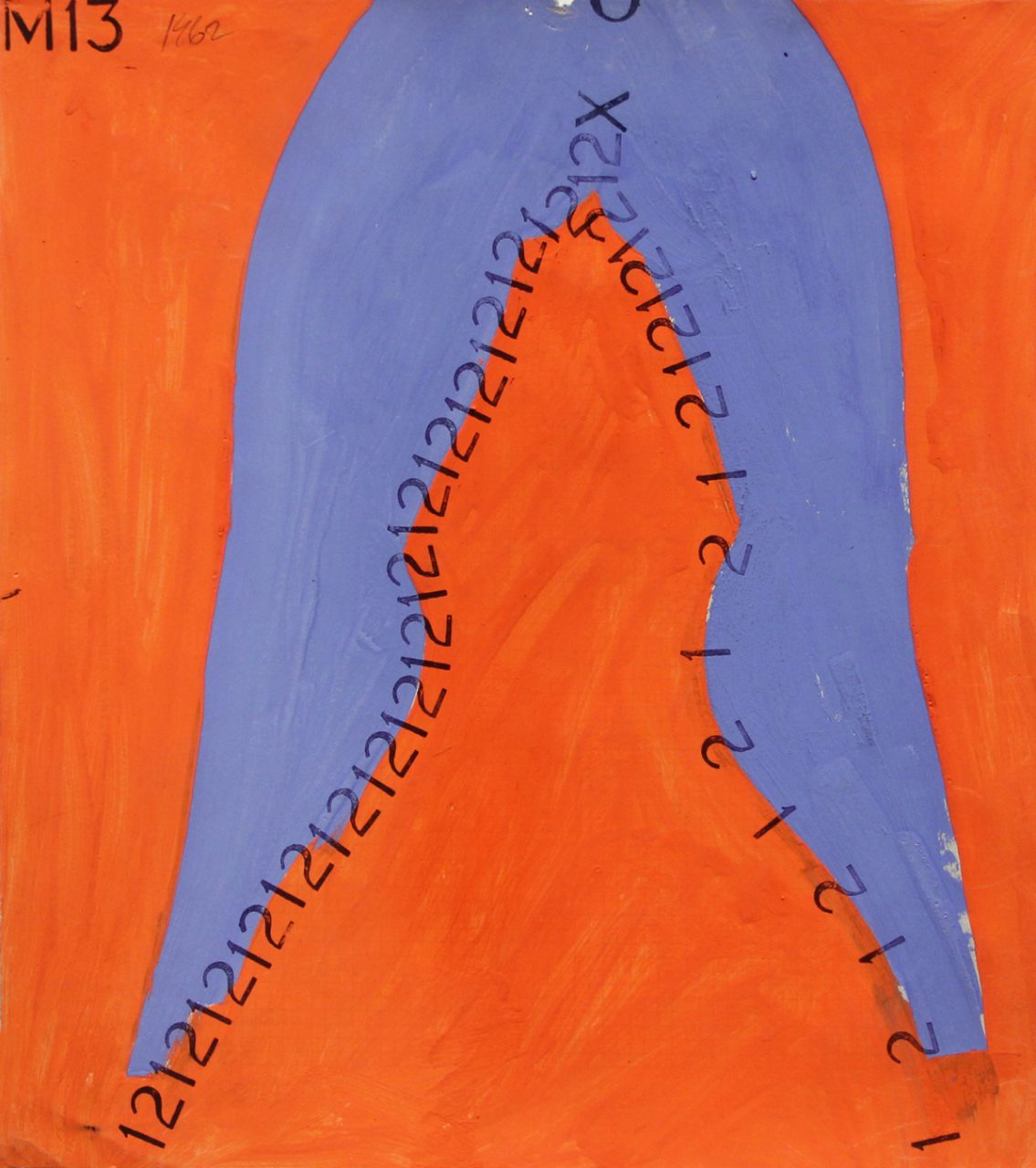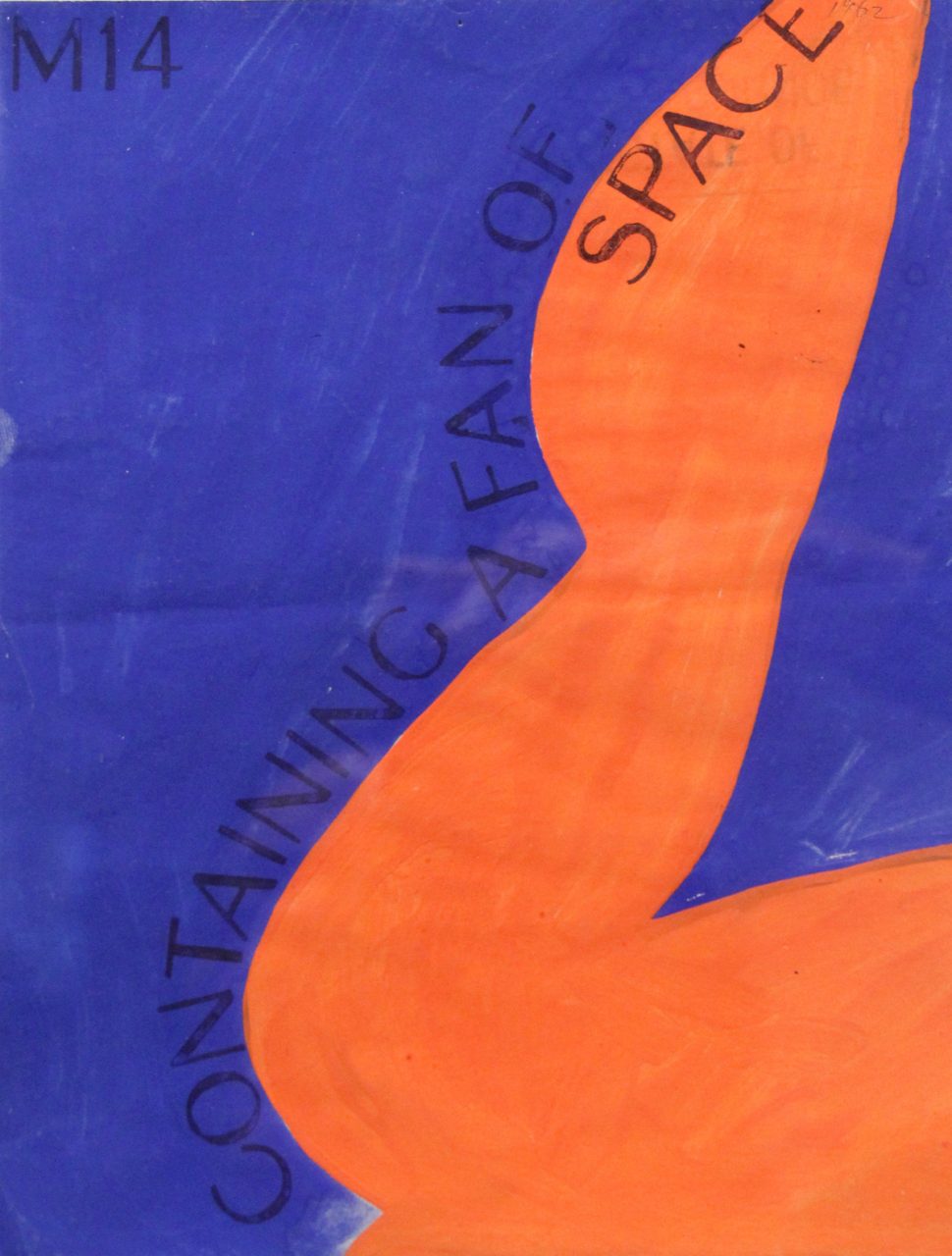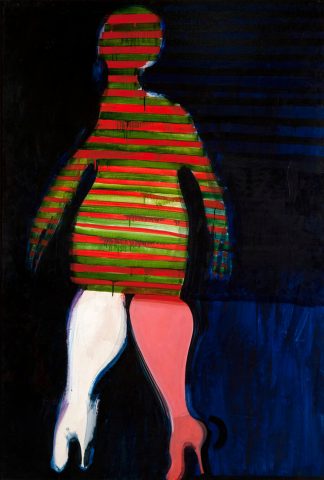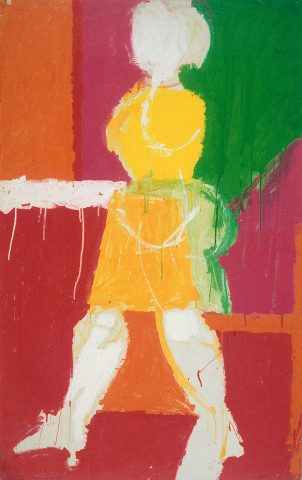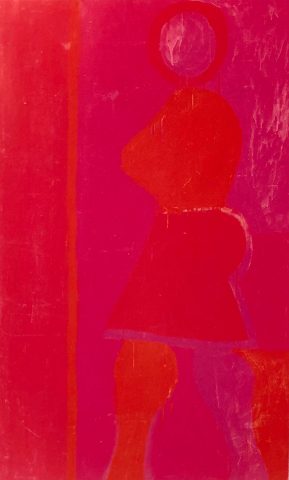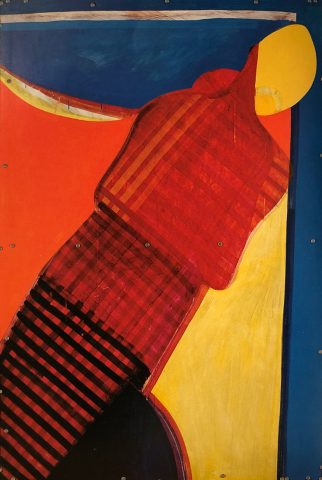Greg Curnoe “1962: Richmond Street Studio Paintings”
Greg Curnoe “1962: Richmond Street Studio Paintings” September 21 – November 2, 2019
“When handling or developing an artist’s estate, you must look into who they were as a human being and what their influences were. I was born in 1958 and Greg secured his first proper studio in 1960, coincidentally across from our gallery on Carling Street. For our Fall exhibition, we have chosen a very specific two year period of Greg’s life – post-Elvis and pre-Beatles. The future was bright for Greg and so were the paintings!” Michael Gibson
To Read Online Catalogue Click HERE
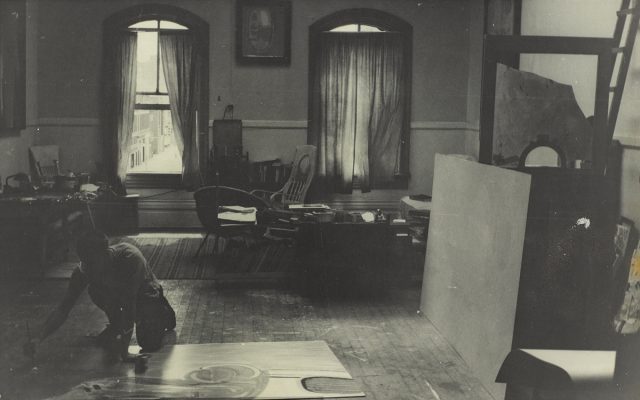
Greg Curnoe’s Richmond Street Studio looking West
In May 1960, Greg Curnoe failed his final year at the Ontario College of Art and returned home to London, Ontario. Wanting to establish a proper artist studio, Curnoe rented a large 45 x 18 foot sky-lit space on the 3rd floor at 432 Richmond Street.
At this time in conservative London, setting up a professional artist’s studio was uncommon. Curnoe’s father thought he would go broke and last three weeks and friends were amazed at his ambition to pay for a space that was a studio to make artwork instead of a place to live in. Greg Curnoe, determined that artists could be “good” even outside of New York or Toronto, started his life as a serious artist working in downtown London.
The Richmond Street studio quickly became a centre of intellectual activity with academics, artists and musicians stopping in at all times of the night or day. Curnoe became one of the main components in the heightened energy in the city and the idea of Regionalism emerges. This is also an important time in the development of Curnoe’s identity as an artist and community organizer: he co-founds Region Magazine; has his first solo exhibition; shows in a Dada group show at Isaacs Gallery; meets Jack Chambers and Michael Snow; co-organizes “The Celebration”, the first art happening in Canada; and has his first public gallery sale of “Tall Girl When I am Sad on Dundas Street” (1961).
- Tall Girl When I Am Sad on Dundas Street, 1961, Oil on Masonite, Collection MacKenzie Art Gallery
- Girl, c. 1960, oil on masonite, Collection AGO
Most importantly, the Richmond Street studio is where, free from the constraints of his OCA teachers, Curnoe began making Dada-inspired assemblages of found objects, collages of bus transfers and large life-sized paintings of people on sheets of plywood. These exciting, innovative, large figurative paintings and series of Day-Glo painted “Walking Women” works on paper are the focus of our Fall exhibition. These works have never before been exhibited. In order to exhibit them for this show, we have reproduced the way that Curnoe would have framed his work in the 1960s; framing the works on paper with plexiglass and the paintings in colourful strip-wood frames.
The paintings that Curnoe made between 1960-1962 in the Richmond Street studio are loose, highly gestured, at times graphic, raw and of course intensely colourful. They reflect Curnoe’s interest in recording the people and events in his daily life as well as his fascination with the shape and curve of the female body. The paintings also, with their flat areas of vibrant colour and swinger sexuality, show Curnoe’s strong affinity to British Pop art and music.
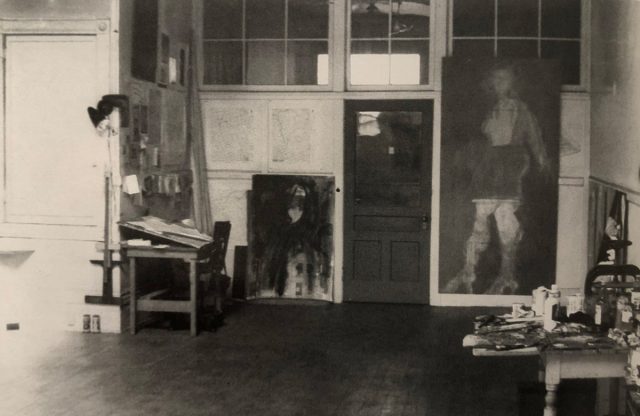
Greg Curnoe’s Richmond Street Studio Looking East
In 1969, Curnoe reflected back on the paintings made in the Richmond Street studio: “Thinking a lot last night… about walking women – the Day-Glo ones I did in the late spring of 1960 and the earlier ones at the college of art – and how Coughtry and De Kooning and Kirchner were in me then – and how Mike Snow came up in late ’60 or early ’61 and saw them and around that time started the walking women works – a very different proposition from what I was doing.”
Greg Curnoe’s “Walking Woman” paintings included in our exhibition, like Michael Snow’s “Walking Woman”, are both influenced by 1960s Pop Art and De Kooning’s nudes. They also are the foundation for important series of work that both artists are now well known for. For Curnoe, the figure became an important subject throughout his entire career from the early pop-inspired paintings through to his self-portraits and countless paintings of his muse and wife Sheila. The Richmond Street studio paintings in particular, however, reveal a freshness and unbridled optimism of a young 26-year-old artist starting out. There is a creative intensity that 432 Richmond Street captured, an energy that shaped Greg Curnoe as an artist.
- Untitled (Footless Walking Woman), c. 1960, Day-Glo Paint on Board, Collection AGO
- Myself Rolled Up in Bed, 1962, Oil & Damar on Masonite, Collection AGO
Greg Curnoe was born in London on November 19, 1936. From 1954-1956, Curnoe attended H. B. Beal Technical and Commercial High School in London and later studied art at Kitchener’s Doon School of Fine Arts (1956) and the Ontario College of Art in Toronto (1957-1960).
Upon returning to London in 1960, Curnoe became a highly motivated artist-community organizer. He co-organized the first art “happening” (1962), co-founded Region Magazine (1961-90), Region Gallery (1962-63) and the Forest City Gallery (1973- ). He also played a key role in the founding of the Nihilist Spasm Band (1965), a collection of artists that created “music” on homemade instruments. In 1968, along with Jack Chambers, Tony Urquhart and Kim Ondaatje, Curnoe became one of the first members of CARFAC, an artist collective that advocates for artists’ rights.
Beginning in the early 1960s, Curnoe exhibited extensively both nationally and internationally. In 1967, Curnoe received a prestigious mural commission for the Dorval International Airport in Montreal. He represented Canada at the Sao Paulo Bienal (1969) and at the Venice Biennale (1976).
Curnoe’s artwork has been included in major exhibitions including “Heart of London” (1968) National Gallery of Canada, “Greg Curnoe: Retrospective” (1981) Musée des beaux-arts de Montréal and “Greg Curnoe: Life & Stuff” (2001) Art Gallery of Ontario. His artwork is included in the collections of the Art Gallery of Ontario, Musée des beaux-arts de Montréal, Musée d’art contemporain de Montréal, National Gallery of Canada, Oakville Galleries, Vancouver Art Gallery and in many other prominent public and private collections.
On November 14, 1992, Greg Curnoe was struck from behind while riding his bright yellow Mariposa bicycle with the London Centennial Wheelers. He was pronounced dead later that day at Strathroy Middlesex General Hospital. He is survived by his wife Sheila, children Owen, Galen and Zoe, brother Glen and sister Lynda.
